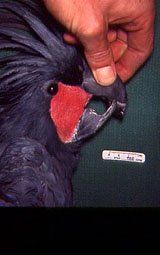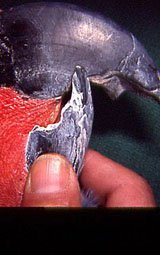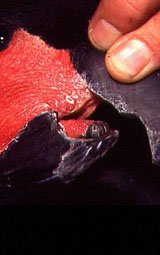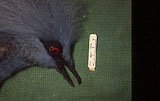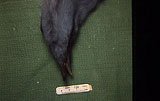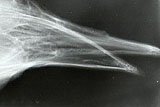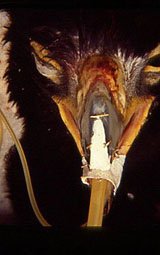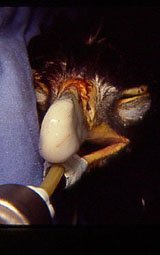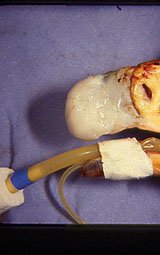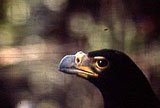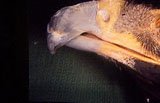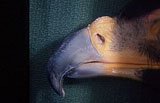Even
Avian Species have "dental" problems with their
masticatory apparatus and oral cavity. Some of these problems
can not be fixed - - - like the bony support of the beak of
these brown pelicans, amputated in anger by a disgruntled
fisherman;
|
 |
Some can be easily repaired by re-contouring with an emery board
or sand paper like the over grown beak of this Palm Cockatoo,
which was fed an improper diet lacking in abrasive wear. |
|
|
With some . . . the process of repair is more trouble than the
initial problem, and should not be attempted, like this old
traumatically fractured mandible of a Crown Crested Pigeon,
which resulted in the asymmetrical, yet completely functional
growth of its lower jaw. |
|
|
And finally . . . . Some can be repaired, but only with lots of
focused effort, time, attention and loving care, like the
traumatically fractured beak of this Black Eagle, |
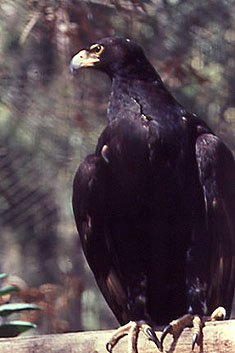 |
|
 |
which was fractured and ripped off when the bird flew into a
steel pole.
|
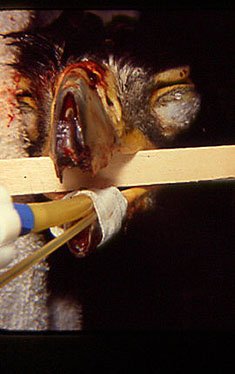 |
|
 |
With the un-orthodox application of some orthodox dental
materials, the bleeding was controlled; the wound was cleaned
& protected; and encased in a dental composite
"bandaged"; and allowed to heal, much like the long
term healing of a traumatically injured finger or toe nail. |
|
|
90 days later, with a lot a luck and the obvious cooperation of
the bird, the "bandage" had fallen off; the beaks had
finally begun to grow ( the new gray area ), but the bird had a
long way to go to become an eagle again.
|
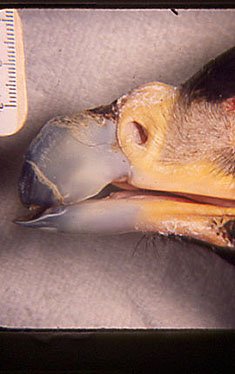 |
During the next two years, on a daily basis the bird was closely
observed, and the beaks grew. At regular 30 to 60 day intervals
the bird was restrained, immobilized, the irregularly growing
beaks were cleaned, disinfected, trimmed, adjusted for length,
re-contoured, and released. |
|
|
And . . . finally . . . . all of this attention to detail and
care paid off, when this Eagle's face and beaks returned to
normal form, appearance, and
function.
|
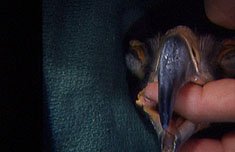 |
|
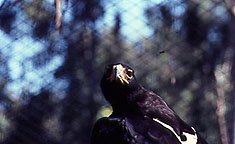 |
|
For translation information and
instructions, please CLICK HERE.
http://www.colyerinstitute.org
Website
Content Copyright © 2009, The Colyer
Institute
For copyright details on specific photos please
contact us by e-mail at info@colyerinstitute.org
This web site is
best viewed with a browser setting of 800 x 600 or greater. If you use a
smaller screen size and would like to view the content of this site using an
alternate interface, please click
here.
|

